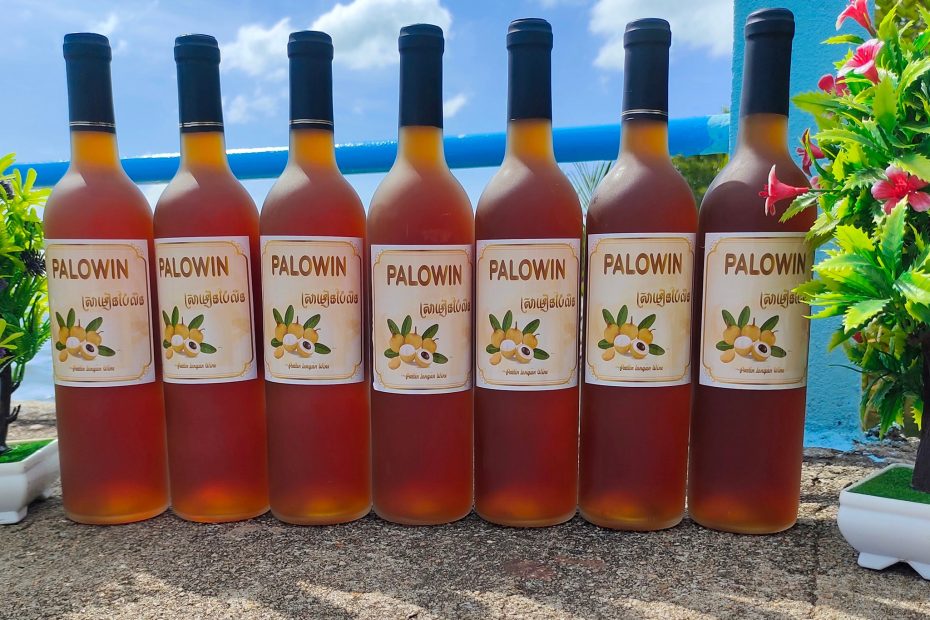When one thinks of wines, regions like Bordeaux or Napa Valley might come to mind. However, Cambodia, with its rich cultural heritage and agricultural abundance, has also been making its mark on the wine scene. While Cambodian wines may not be as widely known as their European counterparts, they offer a unique and delightful experience that marries tradition with innovation. Let’s explore the best Cambodian wines that showcase the country’s diverse flavors and craftsmanship.
List of the Best Cambodian Wines
Here are some of the best Cambodian wines you might want to taste:
1. Rice Wine
Rice wine, a staple of Cambodian culture, is a reflection of the country’s agricultural roots. This traditional wine is crafted by fermenting glutinous rice with yeast and water. Rice wine, known as “Sra Sar,” is a traditional Cambodian beverage that traces its roots back generations. Made by fermenting glutinous rice with yeast and water, rice wine is a staple of Cambodian culture, often enjoyed during festive occasions and celebrations. Its light and slightly sweet flavor profile make it a versatile choice for pairing with various dishes. Beyond its culinary significance, rice wine also holds cultural importance, as it’s often used in traditional ceremonies and offerings.
Health Benefits:
- Contains antioxidants: Rice wine, like other fermented beverages, may contain antioxidants that help combat oxidative stress and reduce the risk of chronic diseases.
- Digestive aid: In moderation, rice wine might aid digestion by promoting the growth of beneficial gut bacteria.
2. Palm Wine
Palm wine, also known as is derived from the sap of palm trees. Collected fresh from the trees, the sap undergoes a natural fermentation process that produces a mildly alcoholic beverage. With its sweet and earthy flavor, palm wine captures the tropical essence of Cambodia’s landscapes and is a favorite among locals.
Health Benefits:
- Rich in nutrients: Palm wine contains vitamins, minerals, and amino acids that can contribute to overall health.
- Cardiovascular benefits: Some studies suggest that moderate consumption of palm wine might have a positive impact on heart health.
You may check: Best Drinks In Cambodia
3. Passion Fruit Wine
Cambodia’s fertile soil and tropical climate provide an ideal environment for cultivating passion fruit. Passion fruit wine is a testament to the country’s ability to transform its bountiful produce into unique libations. The process involves extracting the vibrant and tangy juice of passion fruit and fermenting it into wine. The result is a wine with a striking hue and an invigorating blend of sweetness and tartness. This wine’s refreshing taste makes it a popular choice for those seeking a tropical twist on traditional wines.
Health Benefits:
- High in vitamin C: Passion fruit wine derived from fresh passion fruit can be a source of vitamin C, which supports immune health and skin health.
- Antioxidant properties: Passion fruit is known for its antioxidants, which can help protect cells from damage caused by free radicals
4. Alma Wine
Derived from the cambodge fruit, also known as “alma,” this wine offers a truly distinctive flavor profile. The alma fruit’s tartness is balanced by its natural sweetness, creating a wine that’s both refreshing and intriguing. Alma wine serves as a symbol of Cambodia’s ability to harness its native ingredients to produce beverages that embody the country’s essence. The alma fruit’s unique taste sets this wine apart, making it a captivating choice for those seeking novel flavors.
Health Benefits:
- Immune support: Alma wine, made from alma fruit, could provide vitamin C and other nutrients that support immune function.
- Digestive health: The sour taste of alma wine may stimulate digestive enzymes and promote gut health.
5. Ginger Wine
Ginger wine captures the spicy warmth of one of Cambodia’s most beloved spices. With its invigorating and slightly fiery notes, ginger wine adds a unique twist to the wine repertoire. This wine exemplifies Cambodia’s willingness to experiment with flavors and create beverages that cater to diverse palates. Beyond its taste, ginger wine is also appreciated for its potential health benefits, as ginger is believed to have various medicinal properties.
Health Benefits:
- Digestive benefits: Ginger wine, thanks to its ginger content, may help alleviate digestive discomfort, including nausea and indigestion.
- Anti-inflammatory effects: Ginger has anti-inflammatory properties that may contribute to reducing inflammation in the body.
6. Red Wine
Cambodia’s burgeoning wine industry has ventured into producing red wines, drawing inspiration from international varietals while infusing them with Cambodian influences. These red wines showcase the country’s commitment to producing quality vintages that can stand alongside their global counterparts. With meticulous attention to detail, Cambodian red wines capture the complexity and depth that wine enthusiasts seek.
Health Benefits:
- Cardiovascular benefits: Red wine, particularly due to its content of resveratrol and polyphenols, is associated with potential heart health benefits, including improved circulation and reduced risk of heart disease.
- Antioxidant properties: The antioxidants in red wine may help protect cells from oxidative stress and inflammation.
7. White Wine
Like its red counterpart, Cambodian white wines have been gaining recognition for their quality and craftsmanship. Crafted with meticulous attention to detail, these wines capture the crispness and aromatics associated with classic white wines. Whether enjoyed on their own or paired with Cambodian cuisine, these white wines are a testament to Cambodia’s aspiration to stand out in the world of winemaking.
Health Benefits:
- Cardiovascular effects: White wine, like red wine, contains antioxidants that might contribute to heart health by improving blood flow and reducing the risk of heart disease.
- Potential lung health: Some studies have suggested that moderate white wine consumption may be associated with better lung function.
You may check: Best Cambodian Snacks You Will Love
8. Pailin Logan Wine
Pailin Longan Wine stands as a captivating embodiment of Cambodia’s ability to blend tradition with innovation to create unique and delightful beverages. Crafted from the succulent and aromatic longan fruit, this wine captures the essence of Cambodia’s lush landscapes and showcases the country’s expertise in transforming indigenous ingredients into something extraordinary.
Longan, known as the “dragon eye” fruit due to its translucent white flesh and dark seed resembling an eye, is a tropical fruit native to Southeast Asia. With its sweet and floral aroma, longan has been cherished for centuries for its refreshing taste and natural sweetness.
Health Benefit:
- Antioxidant content: Longan wine might contain antioxidants that help combat oxidative stress and support overall health.
- Rich in vitamins and minerals: Longan fruit is a good source of vitamins and minerals, and these nutrients might be present in longan wine.

Best Cambodian Wines From ស្រាមៀនប៉ៃលិន
What Makes Cambodian Wine Unique?
1. Crafting Cambodian Fruit Wines
The process of crafting Cambodian fruit wine involves a meticulous blending of traditional and modern winemaking techniques. Good ripe fruits are carefully selected, crushed, and their juice extracted. This juice is then skillfully fermented, allowing the natural sugars to transform into alcohol. The result is a wine that retains the distinct aroma and sweetness of fruits while offering a delightful alcoholic twist.
2. Aroma and Taste
Cambodian wine is celebrated for its captivating aroma, which mirrors the delicate fragrance of fresh longan fruit. As you indulge in a glass, the wine unveils its intriguing bouquet, offering a sensory journey through the orchards of Cambodia. On the palate, the wine’s natural sweetness is balanced with its alcoholic content, creating a harmonious fusion of flavors that dance between fruity and intoxicating.
3. Cultural and Culinary Connection
Cambodia is a tropical country that has many kinds of fruits, holding a cultural significance in Cambodia for generations, often associated with abundance and prosperity. Incorporating this cherished fruit into winemaking adds a layer of cultural resonance to Cambodian wine. It pays homage to the traditions of the region while introducing a contemporary twist that appeals to both locals and curious connoisseurs.
4. Pairing Possibilities
Cambodian fruit wines offer a versatile palette for pairing. Its natural sweetness and fruity notes make it an excellent companion to light desserts, such as fruit salads, sorbets, and pastries. Additionally, its floral aroma and balanced flavor profile make it a delightful aperitif to kickstart a meal with elegance and charm.
5. Exploring Cambodia’s Liquid Gem
Cambodian wine isn’t just a beverage; it’s an exploration of Cambodia’s liquid gem, carefully crafted to showcase the essence of Cambodia’s fruits and the expertise of Cambodian winemakers. As you raise a glass of Cambodian Wine, you’re invited to savor a sip of Cambodia’s tropical bounty, an embodiment of nature’s beauty and the human touch that turns it into a cherished libation.
Final Thought
Cambodian wines offer a tapestry of flavors that reflect the country’s cultural heritage and natural resources. From the traditional to the innovative, each wine tells a unique story and offers a taste of Cambodia’s dynamic and evolving culinary landscape. As the Cambodian wine scene continues to develop, these wines hold the promise of taking their place on the global stage, inviting wine enthusiasts to explore the rich tapestry of Cambodian terroir and craftsmanship.
Anyway, it’s important to remember that the health benefits of these wines are best enjoyed when consumed in moderation. Additionally, individual responses to alcohol and its components can vary, so it’s a good idea to consult with a healthcare professional if you have specific health concerns or conditions.



